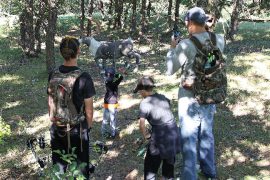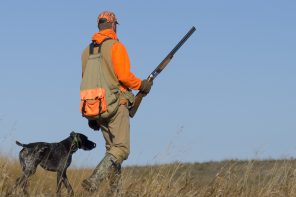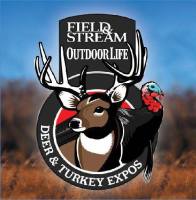 Hunters often spend months, even years, planning that ideal, once-in-a-lifetime trip. They read up on the trophies that they hope to bag, research locations, watch YouTube videos, and imagine themselves on the perfect hunt. Once the perfect hunting trip is mentally planned the next step is to set a realistic budget that will be sufficient to fulfill the dream. Unfortunately, at this point, many hunters wake up to a reality that their excursion will be more expensive than all those years of research led them to believe.
Hunters often spend months, even years, planning that ideal, once-in-a-lifetime trip. They read up on the trophies that they hope to bag, research locations, watch YouTube videos, and imagine themselves on the perfect hunt. Once the perfect hunting trip is mentally planned the next step is to set a realistic budget that will be sufficient to fulfill the dream. Unfortunately, at this point, many hunters wake up to a reality that their excursion will be more expensive than all those years of research led them to believe.
The unexpected costs of a hunting vacation can be quite a shock, particularly if you thought you were being practical. The dream trip may still be within reach, but be sure to account for some expenses you might not otherwise encounter on a local hunt. Adding these factors into your planning process now can eliminate disappointment later. Here are four unexpected costs of a hunting vacation that you may want to consider when planning your adventure.
1. Location, location, location
For certain, there are hunts that will cost more just because the special nature of the trophy. An elk hunt in the Rockies is obviously more unique than your state’s yearly whitetail season and will naturally be more expensive. Traveling to some locations will cost more as well—if you live in New England, you simply can’t jump in your car and drive to Oregon for a pheasant hunt. And, if your plan is to hire a guide for your hunt, ones in prime locations are more likely to charge higher rates because they are more in demand.
2. Scarce tags
Another issue with prime hunting areas – everyone wants to hunt them. If you are willing to travel hundreds of miles to hunt in a location known for trophy bucks, then you can bet locals are just as eager to hunt the same spot. As a result, tags in these areas are often scarce. And if you aren’t lucky to win one in the lottery, the alternative may be paying an outfitter or lodge to provide one—and that can add cost. You might be faced with a tough choice: Shell out big bucks for the chance at a big buck or forego your dream location for somewhere in which tags are more readily available.
3. The lap of luxury
When researching lodges and outfitters online, you may find some with impressive accommodations and incredible amenities, including gourmet meals, a dog handler, one to one guide ratio, and other five-star features. For some hunters, this is the pinnacle of the perfect trip but for others it breaks the bank. So when planning your dream hunt, determine what level of luxury you’d like. Is a decked-out room your ideal accommodation, or will you just be happy with hot water in the shower.
4. Hauling your haul home
If you’re flying to get to your dream location, remember that you’ll have to get all your spoils home. Unfortunately airlines don’t let you bring a few hundred pounds of elk meat as your carry-on. Often this isn’t as much of a factor with smaller birds (if your airline allows two checked bags, a cooler should qualify as one and get your prizes home), but with bigger game, you may be looking at a few hundred dollars in shipping costs. And then there are taxidermy considerations: How do you get a mule deer head home without it rotting in transit? It can be done but it’s another expense that can’t be overlooked.




